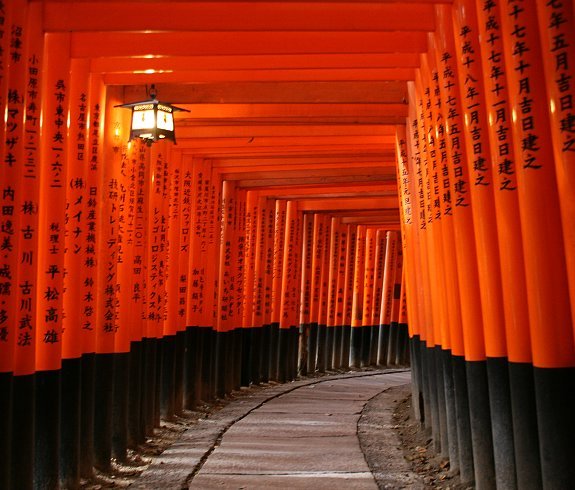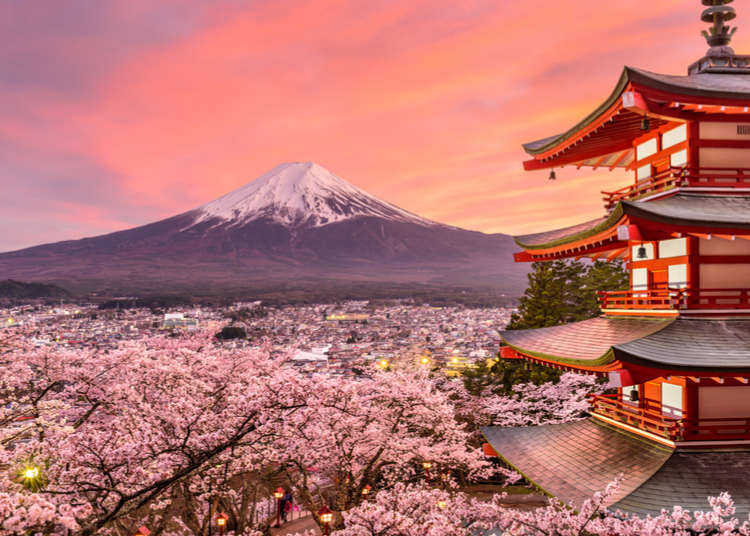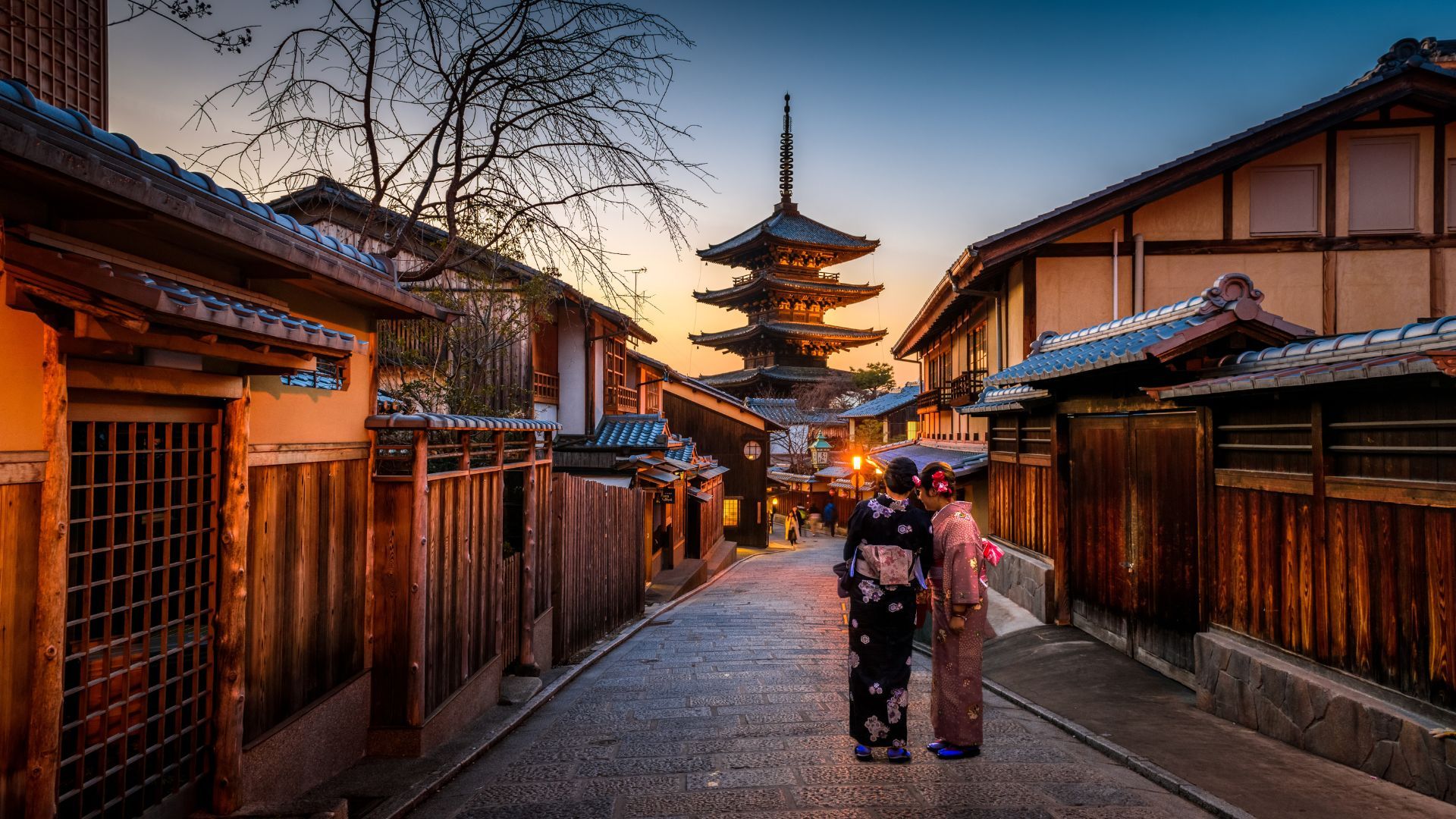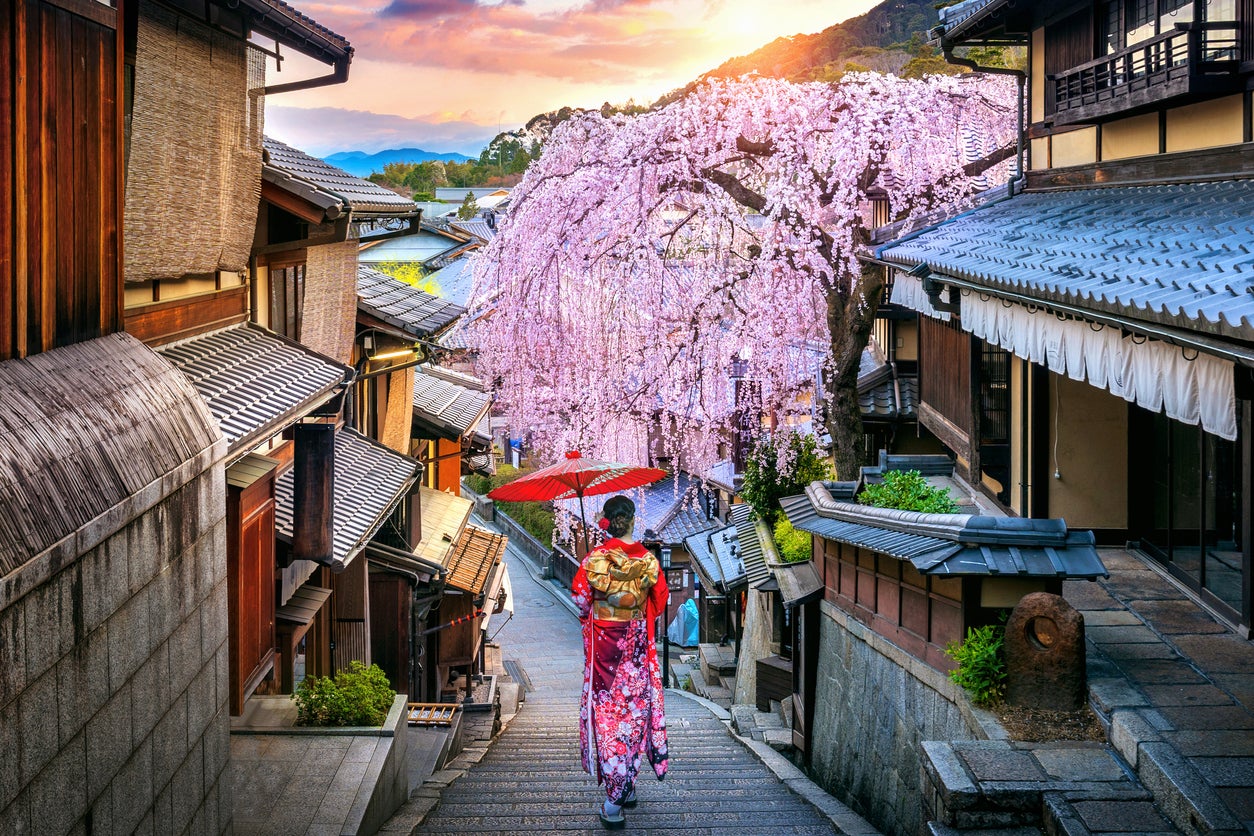Win a Free Trip to Japan!
Experience cherry blossoms and ancient temples
Japan offers a plethora of hidden gems waiting to be explored, far beyond the bustling streets of Tokyo. From serene rural landscapes to vibrant local festivals, the nuances of Japan travel reveal a tapestry of unique experiences. As you delve into the lesser-known aspects of this enchanting country, you will uncover not only its natural wonders but also its rich cultural heritage and culinary delights. Prepare to be amazed by the secrets that await you on your journey through Japan, as these insights promise unforgettable memories.
Unique Destinations Beyond Tokyo
While Tokyo dazzles with its neon lights and urban energy, Japan Travel unveils an array of unique destinations that promise unforgettable experiences. Venture beyond the bustling capital to discover less-traveled paths where culture, nature, and history intertwine beautifully. Here are some standout locations:
1. Nikko
- Highlights: Home to UNESCO World Heritage sites like the Toshogu Shrine.
- Attractions: Breathtaking landscapes, waterfalls, and hot springs.
2. Kanazawa
- Highlights: Renowned for its well-preserved Edo-period districts.
- Attractions: Kenroku-en Garden, 21st Century Museum of Contemporary Art.
3. Naoshima
- Highlights: An island known for its modern art museums and installations.
- Attractions: Art House Project and Benesse House Museum.
4. Takayama
- Highlights: A charming mountain town with traditional wooden houses.
- Attractions: Morning markets and Hida folk village.
5. Okinawa
- Highlights: Pristine beaches and a unique blend of cultures.
- Attractions: Shurijo Castle and traditional Ryukyu performances.
Exploring these unique destinations enriches your Japan Travel experience, offering insights into the country’s diverse heritage and stunning landscapes. Embrace the charm of rural towns, ancient shrines, and serene nature, and create unforgettable memories far from the hustle of Tokyo.

Cultural Experiences in Rural Japan
Exploring rural Japan offers a profound insight into the nation’s rich traditions and unique way of life. While urban centers like Tokyo buzz with modernity, the countryside reveals a slower-paced, yet vibrant culture. Here are some remarkable cultural experiences you won’t want to miss during your Japan travel:
- Stay in a Ryokan: Experience traditional Japanese hospitality by staying in a ryokan—an inn featuring tatami-matted rooms, sliding doors, and beautiful gardens. Many ryokans also serve kaiseki, a multi-course dinner showcasing local ingredients.
- Participate in Tea Ceremonies: Engage in a tea ceremony in a picturesque village. This ritual, rooted in Zen Buddhism, emphasizes preparation and presentation, offering insight into mindfulness.
- Harvest Festivals: Visit during the harvest season (August to October) to partake in local festivals such as Inaka Matsuri. These vibrant celebrations feature traditional music, dance, and crafts.
- Farm Stays: Experience agritourism by staying on a local farm. Learn about rice planting, pick fresh vegetables, and taste homemade meals.
- Art Villages: Discover communities like Naoshima, famous for its art installations and museums. Here, daily life intertwines with contemporary art, showcasing a unique blend of culture.
These enriching experiences contribute significantly to the allure of Japan travel, allowing visitors to connect intimately with the heart of Japanese culture. Embrace the chance to explore beyond the conventional and discover the authentic spirit of rural Japan.
A Guide to Japan’s Lesser-Known Festivals
When planning your Japan travel itinerary, don’t overlook the charm of Japan’s lesser-known festivals. These events offer a glimpse into the rich tapestry of Japanese culture, traditions, and community spirit. Here are some unique festivals you shouldn’t miss:
- Oni Matsuri (Demon Festival) – Held in Matsue, this festival showcases traditional rituals to ward off evil spirits. Participants wear intricate demon masks while parading through the streets.
- Aoi Matsuri (Hollyhock Festival) – Although it takes place in Kyoto, this festival is often overshadowed by the more famous Gion Matsuri. Aoi Matsuri features a procession with participants dressed in Heian-era clothing, making it a picturesque experience.
- Kanda Matsuri – Celebrated in May and October in Tokyo, this festival celebrates the Kanda Shrine. It includes a grand parade of portable shrines (mikoshi) and scrumptious street food.
- Kurama Fire Festival – Located near Kyoto, this festival is celebrated in mid-October. Villagers carry torches to ward off spirits, creating a mesmerizing spectacle against the night sky.
Highlights for Festival Enthusiasts
| Festival | Location | Dates | Unique Feature |
|---|---|---|---|
| Oni Matsuri | Matsue | February | Traditional demon rituals |
| Aoi Matsuri | Kyoto | May 15 | Heian-period procession |
| Kanda Matsuri | Tokyo | Various (May/Oct) | Grand parade of mikoshi |
| Kurama Fire Festival | Kyoto | Mid-October | Nighttime torch procession |
Incorporating these festivals into your Japan travel plans allows you to immerse yourself in local customs and experience the vibrant culture of Japan beyond its major cities.
Exploring Japan’s Natural Wonders
Japan’s breathtaking natural wonders offer a paradise for nature enthusiasts and adventure seekers. From majestic mountains to serene coastlines, here are some must-visit spots for your Japan travel itinerary:
- Mount Fuji: Iconic and sacred, this volcano provides stunning landscapes and hiking trails. The views from the summit are particularly rewarding.
- Nara Park: Famous for its free-roaming deer, this park is home to beautiful temples and lush gardens, making it a serene escape in the heart of Nara.
- Shiretoko National Park: Discover incredible biodiversity in this UNESCO World Heritage site. Its remote wilderness features rugged coastlines, forests, and hot springs.
- Kamikochi Valley: Nestled in the Japanese Alps, Kamikochi offers breathtaking hiking trails amidst crystal-clear rivers and towering peaks.
- Okinawa Islands: With their pristine beaches and coral reefs, Okinawa provides the perfect setting for snorkeling and relaxation.
Comparison Table of Must-Visit Natural Wonders
| Natural Wonder | Activity | Best Time to Visit |
|---|---|---|
| Mount Fuji | Hiking | July – September |
| Nara Park | Sightseeing | March – November |
| Shiretoko National Park | Wildlife Watching | June – October |
| Kamikochi Valley | Hiking | Mid-April – October |
| Okinawa Islands | Snorkeling & Relaxation | June – September |
In summary, exploring Japan’s natural wonders offers unforgettable experiences that showcase the country’s diverse landscapes. Plan your Japan travel adventure to include these breathtaking locations!

Historic Sites Off the Beaten Path
When it comes to Japan Travel, many tourists flock to iconic landmarks like Kyoto’s Kinkaku-ji or Tokyo’s Meiji Shrine. However, Japan houses numerous historic sites that often remain overlooked, revealing the country’s rich heritage and cultural diversity. Discovering these hidden gems allows travelers to experience a more authentic side of Japan.
Notable Off-the-Radar Historic Sites:
-
Hiraizumi (Iwate Prefecture)
- A UNESCO World Heritage Site, known for its ancient temples and gardens reflecting Pure Land Buddhism.
-
Kurashiki Bikan Historical Quarter (Okayama Prefecture)
- Renowned for its picturesque canal, traditional wooden buildings, and preserved warehouses, showcasing Japan’s merchant history.
-
Tottori Castle Ruins (Tottori Prefecture)
- Offering stunning views of the surrounding area, these ruins provide insight into the feudal era, wrapping you in the history of samurai culture.
Comparison Table of Historic Sites:
| Site Name | Location | Unique Feature |
|---|---|---|
| Hiraizumi | Iwate Prefecture | Temples and gardens of Pure Land Buddhism |
| Kurashiki Bikan Historical Quarter | Okayama Prefecture | Picturesque canal and historic wooden buildings |
| Tottori Castle Ruins | Tottori Prefecture | Scenic views and samurai culture insights |
In summary, while planning your Japan Travel, don’t miss the opportunity to explore these historic sites off the beaten path. You’ll gain a deeper understanding of Japan’s layered history and culture, ensuring your journey is nothing short of extraordinary.
Culinary Delights in Regional Japan
When it comes to Japan Travel, regional cuisines offer a tantalizing glimpse into the country’s diverse culinary landscape. Each area boasts its own unique flavors and dishes that reflect the local culture and agricultural bounty. Here are some must-try delights from various regions:
- Hokkaido: Known for its fresh seafood and dairy products, Hokkaido serves up creamy miso ramen and rich cheese tarts.
- Kyoto: Famous for kaiseki dining, Kyoto’s multi-course meals highlight seasonal ingredients and traditional presentation.
- Osaka: Dubbed the "nation’s kitchen," Osaka delights with takoyaki (octopus balls) and okonomiyaki (savory pancakes) that please both locals and tourists.
- Fukuoka: Renowned for its tonkotsu ramen, Fukuoka showcases noodles in a rich pork bone broth, perfect for hearty meals.
| Region | Signature Dish | Description |
|---|---|---|
| Hokkaido | Miso Ramen | Rich broth with noodles, seafood, and toppings. |
| Kyoto | Kaiseki | Elegant multi-course meal using seasonal ingredients. |
| Osaka | Takoyaki | Crispy octopus-filled balls served with sauce. |
| Fukuoka | Tonkotsu Ramen | Flavorful pork bone broth with tender noodles. |
Exploring these regional delights not only satisfies your taste buds but also enhances your Japan Travel experience. Each bite tells a story of local traditions and ingredients, providing a delicious adventure that goes beyond the conventional. So pack your bags and get ready to savor the authentic flavors of Japan!
Local Customs and Etiquette to Know
When embarking on your Japan travel adventure, understanding local customs and etiquette is paramount. This not only shows respect but also enhances your travel experience. Here’s a concise guide to essential customs:
- Bowing: A common greeting; the depth of the bow varies depending on the occasion. A slight bow suffices for casual greetings, while a deeper bow shows greater respect.
- Shoes Off Indoors: Always remove your shoes when entering homes, certain traditional inns (ryokan), and temples. Look for designated areas to store your shoes.
- Chopstick Etiquette: Never stick chopsticks upright in rice, as it resembles a funerary ritual. Instead, rest them on a holder or on the table.
- Gift Giving: When presenting a gift, offer it with both hands and express gratitude. It’s customary to downplay its value to show humility.
- Public Behavior: Maintain a low volume while in public. Speaking loudly or using a phone on public transport is frowned upon.
By adhering to these customs during your Japan travel, you’ll foster connections with locals and enjoy a more authentic experience. Embrace these traditions, and you’ll find that they add richness to your journey in this incredible country.

Transport Tips for Discovering Hidden Gems
When planning your Japan travel itinerary, efficient transportation is vital for uncovering the nation’s hidden treasures. Here are essential tips to navigate Japan’s transport system effectively:
- Use the Japan Rail Pass: If you plan to travel across multiple regions, consider buying a Japan Rail Pass. It offers unlimited travel on most JR trains, including the famous Shinkansen (bullet trains).
-
Explore Regional Passes: Various regional passes cater to specific areas. For example:
- Kansai Area Pass – Perfect for exploring cities like Kyoto, Osaka, and Nara.
- Hokkaido Rail Pass – Ideal for adventuring in Japan’s northern island.
-
Public Transport: Japan boasts an extensive public transport network:
- Subways & Buses: Efficient within cities. Use Suica or Pasmo cards for easy navigation.
- Local Trains: Connect rural areas to cities, making them ideal for reaching hidden gems.
-
Rent a Car: In rural Japan, renting a car gives you flexibility. This option is particularly useful to explore:
- Scenic routes in the Japanese Alps
- Off-the-beaten-path destinations like Shirakawa-go or the Nakasendo Trail
- Bicycle Rentals: For a slower pace, consider bicycle rentals in smaller towns. This allows you to explore local attractions at your leisure.
By utilizing these transport tips, your Japan travel experience will reveal a wealth of hidden gems waiting to be discovered.
Best Times to Visit for Unique Experiences
When planning your Japan Travel, timing can greatly enhance your experience. Each season offers unique attractions and cultural events that breath life into your journey. Here’s a breakdown of the best times to visit:
-
Spring (March to May):
- Cherry Blossom Season: Witness vibrant sakura blooms in Kyoto and Tokyo.
- Festivals: Participate in Hanami (flower viewing) picnics, particularly in parks.
-
Summer (June to August):
- Festivals: Enjoy lively matsuri (festivals) like Gion Matsuri in Kyoto.
- Fireworks Displays: Experience breathtaking hanabi (fireworks) festivals across the country.
-
Autumn (September to November):
- Fall Foliage: Capture stunning autumn colors in places like Nikko and Arashiyama.
- Cultural Events: Attend the Takayama Autumn Festival featuring beautifully decorated floats.
-
Winter (December to February):
- Ski Resorts: Hit the slopes in Niseko and Hakuba for world-class skiing.
- Hot Springs: Relax in onsen (hot springs) during the chilly months.
Comparison Table of Seasonal Highlights
| Season | Highlights | Best Locations |
|---|---|---|
| Spring | Cherry Blossoms, Hanami | Tokyo, Kyoto |
| Summer | Festivals, Fireworks | Kyoto, Osaka |
| Autumn | Fall Foliage, Cultural Events | Nikko, Arashiyama |
| Winter | Skiing, Onsen | Niseko, Hakuba |
In summary, your Japan Travel itinerary should consider these seasonal experiences. Regardless of when you visit, Japan will undoubtedly surprise you with its rich culture and incredible natural beauty.
Travel Resources for Your Journey in Japan
When planning your Japan travel, having the right resources at your fingertips can enhance your experience immensely. Here’s a curated list to help you navigate your journey smoothly:
Online Platforms:
- Japan National Tourism Organization (JNTO): Offers comprehensive guides, maps, and tips for travelers.
- Visit Japan: Features extensive information on destinations, accommodations, and activities.
Mobile Apps:
- Google Maps: Essential for navigation, including public transportation routes.
- HyperDia: A must-have for train schedules across Japan, making your travel timely and efficient.
Books and Guides:
- Lonely Planet Japan: This guide provides insights into both popular destinations and hidden gems.
- Rick Steves Japan: Offers an in-depth look at cultural experiences and practical travel tips.
Travel Forums & Communities:
- Reddit: Check out subreddits like r/JapanTravel for current advice and personal experiences.
- Travel Guides on Facebook: Connect with like-minded travelers for real-time tips.
Tours and Services:
- Local Tour Operators: Book guided tours to discover less-explored areas and authentic experiences.
- Cultural Exchange Programs: Engage with locals through language or cultural exchange, enhancing your understanding of Japanese customs.
By leveraging these resources, your Japan travel can transform from merely sightseeing to a deeper exploration of culture, history, and unique experiences. Make sure to plan ahead and enjoy every moment!
Frequently Asked Questions
What are some less-known travel destinations in Japan?
Japan is home to numerous hidden gems beyond the popular tourist attractions like Tokyo and Kyoto. Some lesser-known destinations include the artistic island of Naoshima, known for its modern art museums; the serene village of Shirakawa-go, famous for its traditional gassho-zukuri farmhouses; and the stunning landscapes of the Nakasendo Trail, an ancient route connecting Kyoto and Tokyo. Other notable mentions are the historic city of Takayama with its beautifully preserved Edo-period buildings and the tranquil Kumano Kodo pilgrimage routes, which offer breathtaking nature and cultural experiences.
What is the best time to visit Japan for hidden gems?
The best time to explore Japan’s hidden gems largely depends on the regions you plan to visit. Generally, the spring (March to May) is ideal for cherry blossom viewing and milder weather. Other beautiful seasons include autumn (September to November), which showcases vibrant foliage across the countryside. However, if you’re keen on visiting less crowded places, winter (December to February) can also be magical, particularly in regions like Hakuba for its ski resorts or the snow-covered temples of Nara.
How can I communicate effectively while traveling in Japan?
While many Japanese people understand basic English, knowing a few key phrases in Japanese can greatly enhance your travel experience. Simple greetings like ‘Konnichiwa’ (Hello) or ‘Arigato’ (Thank you) can go a long way in showing respect toward the local culture. Furthermore, downloading translation apps such as Google Translate can help bridge any language gaps. Many signs in major cities are also bilingual, making navigation easier, but learning a few essential terms for everyday conversations will certainly enrich your interactions.
Are there unique customs I should be aware of while visiting Japan?
Yes, Japan is known for its rich cultural traditions, and being aware of unique customs can enhance your travel experience. For example, it’s customary to bow when greeting someone, and removing shoes before entering homes, ryokans (traditional inns), or certain temples is expected. Additionally, tipping is not customary in Japan, as excellent service is considered standard. Familiarizing yourself with basic dining etiquette, such as not sticking chopsticks upright in rice and saying ‘itadakimasu’ before eating, will also show your respect for their culture.
What should I pack for an adventurous trip exploring Japan’s hidden gems?
Packing for an adventurous trip to Japan requires thoughtful consideration based on the destinations and activities you plan to engage in. Lightweight layering is ideal given Japan’s varied climates, so pack items that can easily be added or removed. A good pair of walking shoes is essential for urban explorations and nature hikes alike. If you plan to visit rural areas, consider bringing a daypack, water bottle, and a portable charger for your devices, ensuring you stay connected while wandering off the beaten path.
